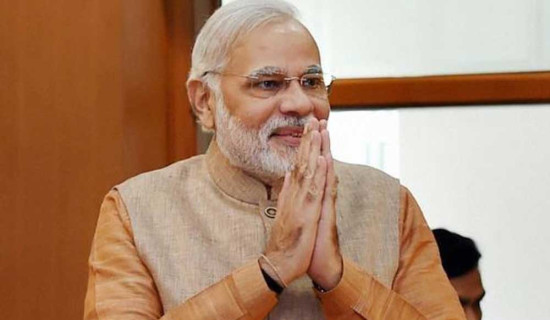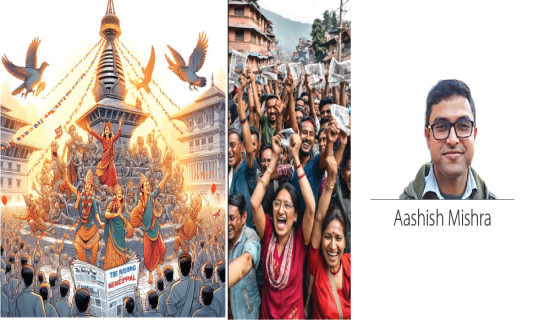- Sunday, 24 August 2025
Unravelling the enigma around Yangubahal’s Mayajaal Lokeshwor
Lalitpur, July 7: Some things get more puzzling in proportion to one's attempts to understand them. The temple of Mayajaal Lokeshwor in Yangubahal, Lalitpur Metropolitan City–8, is one of them.
There are very few things one can say with certainty about this deity and the sanctuary it resides in. It has been studied and literature has been produced. But their attempts at unravelling the secrets of this enigma seem to have only pushed it deeper into mystery.
Most recently, some locals endeavoured to learn about the temple after the 2015 earthquake damaged it. “We needed to rebuild it after the quake and we wanted that rebuilding to be informed by historic facts. But we found little information,” Sanjoj Maharjan, a local of the area, shared.
“The elders here also do not know much about the deity and its abode,” Astabir Maharjan, chairman of the consumer committee formed for the reconstruction of the Mayajaal Lokeshwor Temple, told The Rising Nepal.
There are no inscriptions on or around the temple to give us an insight into who built it and why? However, a few lines of text are etched on the pedestal, on which the stone sculpture of the Lokeshwor stands, which reveal who consecrated the statue. “Perhaps that could be a starting point for research,” Astabir suggested.
Both Sanjoj and Astabir have collected numerous translations of the text done by various scholars. But, in the interest of credibility and authority, this reporter looked at the one recorded by historian Dhan Bajra Bajracharya in his 1973 book ‘Lichhavikaalkaa Abhilekh’ (Inscriptions of the Lichhavi Era). It reads, “Hudharmajeev of Etangagram Lahugvala made an Avalokitesh of pure and unspoiled stone to rescue creatures walking on the wrong path but still seeking wisdom from the darkness of this solemn world. This benevolent (Avalokiteshwor) was consecrated in the kingdom of Shree Manadev on the second day of the dark fortnight of Magh in Sambat 180.”
This tells us that the statue of this Mayajaal Lokeshwor was sculpted and installed by a craftsman named Dharmajeev who lived in Etangagram Lahugvala during the reign of King Manadev. An assumption is that the Manadev mentioned could be Manadev III, which, if true, would make this the only inscription recording his existence found to date, as per historian Yogesh Raj’s 2021 ‘Itihasma Sankramanvad’
(Transitionalism in History).
But then, where is this Etangagram Lahugvala?
According to Professor Dr. Sudarshan Raj Tiwari, former dean of the Institute of Engineering and a scholar on urbanism and architecture, Lahugvala refers to the present-day Lubhu in Mahalaxmi Municipality–8.
Tiwari wrote in his book ‘The Ancient Settlements of the Kathmandu Valley’ published in 2001, “It is possible that [Etangagram] was an elevated place that included Lahugvala within it.” He added, “Since Lahugvala is Lubhu, this village (Gram) must have covered an area around Lubhu.”
But historian Hari Ram Joshi, who has also studied the stele, feels differently. He believes that Dharmajeev hailed from Yanamuga, a neighbourhood close to the temple and in the same ward as Yangubahal.
“The inscription talks of a Dharmajeev, who lived in a place called Etanga Mula Rhagwala during the reign of King Manadev, installed the statue of Avalokitesh to rescue the suffering beings from the intense world of Trimala (three defilements) – lust, anger and envy,” he summarised for The Rising Nepal.
“Etanga Mula Rhagwala is the old name of Yanamuga,” he informed.
Based on Joshi’s elucidation, one could surmise that the deity could have been given the name ‘Mayajaal Lokeshwor’ because it was established to rescue people from Maya – the mental and physical illusions like desire, envy, anger, naivety and lust, among others, which keep human consciousness entangled.
The idol’s physical characteristics and appearance, though, do not match with those of the god normally worshipped as Mayajaal Lokeshwor.
As stated in the books ‘Lokeshwor Parichaya’ (Introduction to Lokeshwor) and ‘The Indian Buddhist Iconography’, Mayajaal Lokeshwor is depicted as having six faces and twelve arms. The figure at Yangubahal only has one face and two arms. The pictures in the books, written by scholars Amogha Bajra Bajracharya (1979) and Dr. Benoytosh Bhattacharya (1924) respectively, also do not match with the appearance of the sculpture here.
A metal statuette of Mayajaal Lokeshwor present at the Hiranyavarna Mahavihar (Golden Temple), too, does not look like the stone image at Yangubahal.
“These differences are because the graven image under discussion represents Padmapani Lokeshwor, not Mayajaal,” clarified Sanjay Shakya, a lecturer of Buddhist Studies at Sugata Buddhist College and Lotus Academy College.
The image does appear to be holding a lotus in its left hand, a distinctive characteristic of Padmapani (lotus-bearing) Lokeshwor, and the Facebook page opened for the reconstruction of its temple refers to it as the Padmapani Mayajaal Lokeshwor.
“Going by the iconography, there is no doubt that the divinity is Padmapani Lokeshwor,” Shakya stressed. “The name Mayajaal could be a name the god acquired at some point in its history. This is not an uncommon phenomenon and it has occurred in other places too.”
But there is something else to consider. “The statue present today may not be the original one,” Shakya underlined.
Sanskrit amateur, art historian and scholar Gautama Vajracharya explores this possibility in a 2012 paper titled ‘Two Dated Nepali Bronzes and their Implications for the Art History of Nepal’. He notes that the pedestal, which describes the deity and dates it to the Lichhavi era, is separate from the image that it is currently under, and that the Lokeshwor statue of Yangubahal contains stylistic features of the post-Lichhavi period.
“We can therefore conclude that although the pedestal inscription refers to the establishment of an image of Avalokiteshwor, the pedestal certainly belongs to a different image of the same god,” he writes.
“We must presume that the divinity first placed here at the time of inscription was removed for some reason, perhaps theft, and replaced with the present one,” Shakya concluded.
Another question that arises is why the artisan Dharmajeev established the Lokeshwor at Yangubahal, especially if, going by Tiwari’s assertion, he hailed from Lubhu or somewhere further.
“Because Yangubahal was an important settlement in the Lichhavi period,” Joshi answered. “This is evidenced by the other monuments present in and around the area.”
There is an ancient Chaitya in an open yard across the alley from the Mayajaal Lokeshwor Temple. There is also a shrine dedicated to the goddess Harati that is possibly older than the Harati Temple at Swayambhu.
Similarly, there is a Buddhist statue at the nearby locality of Chapat that is older than the Lokeshwor temple and an inscription dated Sambat 103 mentioning King Narendradeva of the palace of Bhadradivasa on a platform in front of the Yangubahal Club.
“This was a reputed route during the rule of the Lichhavi dynasty,” Joshi explained.
Additionally, Yangubahal was also the ancestral home of the Munshis of Kathmandu.
The Munshis were a distinguished family who had near-exclusive authority over the unified Nepal’s Munshi Khana (precursor to the Ministry of Foreign Affairs) until the end of the Rana regime in 1951. “The Munshis are descendants of one of the six principal Pradhans who held power in the state of Patan during the time of the Malla kings,” Joshi informed. “They are popularly known as the Munshis of Maru [of Kathmandu] but their ancestors lived in Yangubahal in mediaeval times.”
Or, the Lokeshwor may have been emplaced here because it was convenient. According to Astabir, the exact place where the Mayajaal Temple stands is called Lyapcha, which might mean an open or comfortable place. “The temple could have been built here for ease.”
Meanwhile, the Mayajaal Lokeshwor Temple Reconstruction Committee is almost finished rebuilding the west-facing temple. The committee began work a few years ago and aims to complete it by January next year. For the reconstruction, it has received budget from the ward office and donations from ordinary individuals.
So, at the end of this 1,500-word-long article, what can we say about Yangubahal’s Mayajaal Lokeshwor?
The locals believe it to have been consecrated 1,300 years ago. The date on the pedestal of the idol puts its establishment around the seventh century. But artistically, the statue appears to have been carved after the time of the Lichhavis. The god worshipped today may not be the god originally placed by Dharmajeev, who may have either been from the Yanamuga nearby or an area around Lubhu six kilometres away. Its presence may speak of the importance of Yangubahal in the Lichhavi kingdom or hint at the existence of an open space once upon a time. Its name may be an acknowledgement of the aim its sculptor held of rescuing people from Maya or it may be a label later acquired by a deity that more closely resembles Padmapani Lokeshwor.
A jaal of ‘may’, ‘could’ and ‘perhaps’ around Patan’s little-known Mayajaal Lokeshwor.
(All photos courtesy of Sanjoj Maharjan)



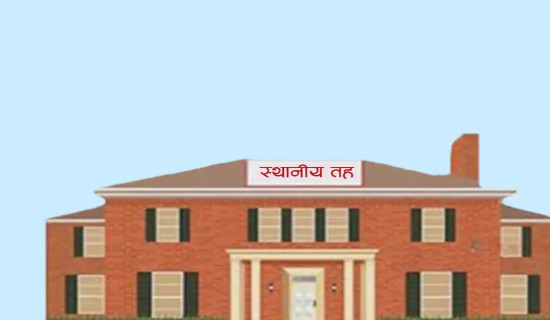
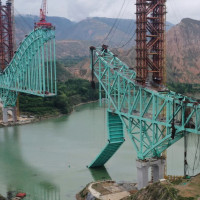
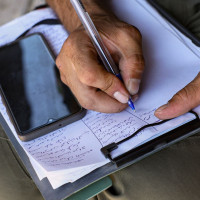


-square-thumb.jpg)
